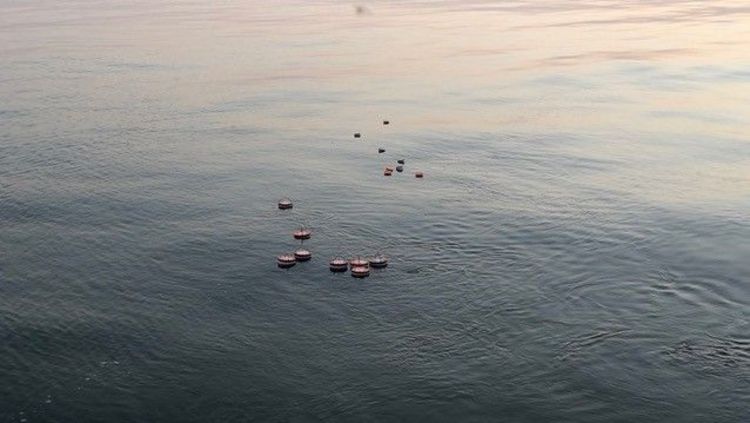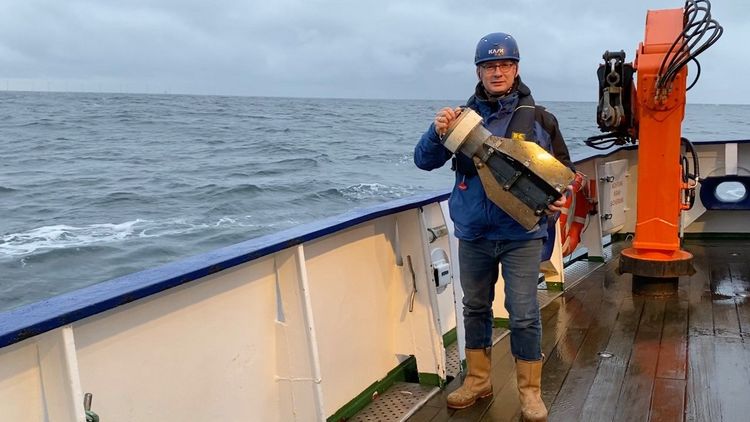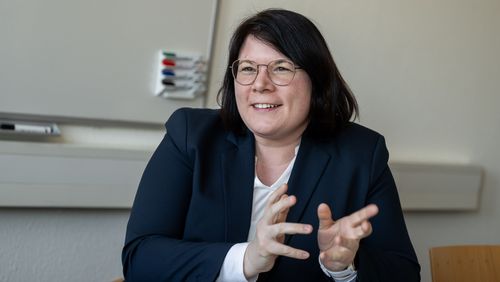Oceanographer Thomas Badewien from the Institute for Chemistry and Biology of the Marine Environment (ICBM) is receiving a lot of calls from tourists and beach walkers at present. He explains in an interview what this is all about and what role the participation of members of the public plays in research.
Your phone is ringing almost non-stop at the moment. Why is that?
THOMAS BADEWIEN: We released a number of drifters into the sea in our "Good Coast Lower Saxony" project. These free-floating buoys, which are about 50 centimetres long, have a surface diameter of 14 centimetres and are like modern-day messages in bottles – equipped with GPS trackers and a satellite communication module. The wind, currents and waves sometimes drive the drifters ashore, where walkers or tourists sometimes find them. Since my contact details are on the drifters, people keep contacting me about them. They want to know what the devices are for and what to do with them.
Some of those conversations are probably quite unusual...
BADEWIEN: Indeed. A boy who came across a drifter in the dunes rang me up recently. He even shared his discovery on the video-sharing platform TikTok. Another time, one of the buoys was floating near the shore off Schillig [a village on Germany's North Sea coast], where some boys fished it out of the water. Some drifters travel long distances before running aground. We've been using them for several years now, and some have drifted as far as Sweden and Norway. One family found a drifter during their Christmas holiday in Denmark. They took it to their holiday home and then sent me a photo of the drifter propped up under the Christmas tree.
What are you researching with the drifters?
BADEWIEN: They provide us with information about the currents at the sea surface. In the "Good Coast Lower Saxony" project, for example, we are interested in how coastal protection structures influence the complex currents in the Wadden Sea. To investigate this, we released the drifters at two different locations – some in the Harle gat between Spiekeroog and Wangerooge. There is a groyne there that changes the currents. Other buoys are now drifting in the Otzumer Balje gat between Spiekeroog and Langeoog, where there are no structures obstructing the currents. We record the effects of the waves and tidal currents and compare the data.
How do people react to your research?
BADEWIEN: Very positively! They want to help and are interested in the topics. People who find drifters often send me photos of where they found them or how they put the drifters back into the sea. All those who find our drifters are very helpful and excited to be involved.
What can people who find a drifter do?
BADEWIEN: That depends on which drifter they find. Our modern "message in a bottle" has an operating time of about eight months, after which it no longer sends signals. In that case, we ask them to send it back to us, or we pick it up. So the drifters aren't left out in nature but are reused again and again.
With drifters that we have only recently released in the Wadden Sea, things are different. Some run aground relatively quickly. In that case it's very helpful if the finder simply puts the drifter back into the sea at high tide. That way we can collect more data.
So this is an important task that citizens take on here. How important is direct participation by members of the public for your research?
BADEWIEN: For us, working together with members of the public is very enriching. Many people, especially young people, are very keen to learn more about our research. In my view, it's becoming increasingly important to involve members of the public as "citizen scientists". This also creates acceptance for research in society, and that's not something that can be taken for granted. In the "Good Coast" project, we involve local people as well as decision-makers right from the outset, and we develop our research questions together with them. Researchers are also still getting used to this approach, but in this way a whole new dialogue emerges. I think this form of science is important in order to reach out to people in their own environment.
And what comes next with the drifters?
BADEWIEN: We're constantly refining them – also with the help of many students, especially from our Master's programme in Marine Sensor Technology and the Bachelor Marine Technology programme at the Jade University of Applied Sciences. They come up with some great new ideas. In the future, we plan to put a QR code on each drifter to give those who are interested easy access to more information. We're also looking at how we can improve the power supply in the drifters. For the autumn, we're planning another big campaign in which we'll release 20 drifters into the sea – and we hope that members of the public will once again help out.
Interview: Lara Schäfer





